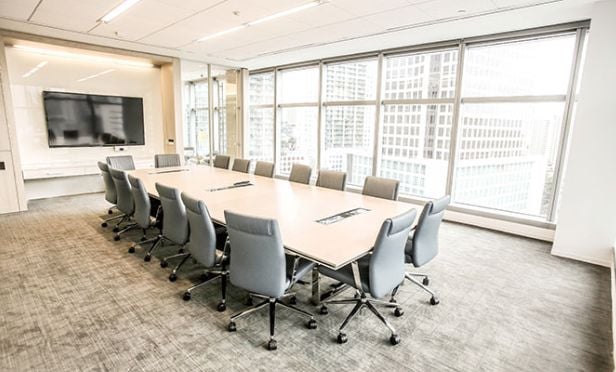 The Akerman office also represents a new wave of entrepreneurial spaces in Downtown Miami, integrating many of the design elements seen in local start-up incubators and coworking offices.
The Akerman office also represents a new wave of entrepreneurial spaces in Downtown Miami, integrating many of the design elements seen in local start-up incubators and coworking offices.
MIAMI—As I reported in December, landlord representation is in the beginning stages of a monumental change within the office sector of commercial real estate. Landlords are no longer satisfied with basic “space and place” advisory and creating a sense of place is becoming vital.
Globest.com caught up with Bo Jackson, senior managing director and partner of Transwestern’s Southeast operations, to get some insights. You can still read part one of this article: Landlord Reps Facing ‘Monumental Change.’
“A growing number of industries have elevated reevaluating their workplace needs and business metrics less on rent with increased importance put upon recruiting and retention workforce talent,” Jackson tells GlobeSt.com. “Companies now are drawn to office buildings that evoke a sense of place—“placemaking”—that is perhaps more conducive to growing their business.”
According to the Project for Public Spaces, placemaking is defined as “the art of creating public ‘places of the soul,’ that uplift and help us connect to each other.” Jackson explains the purpose of placemaking in the office world is to enhance the daily work experience and positively influence a work environment that permeates beyond walls into the market.
“Leasing brokers who creatively and successfully advise their landlord clients on placemaking for multi-tenant office buildings will consistently win the quality asset assignments,” Jackson says. “Changes in workplace demographics and norms have altered the way people work within a building which should be taken into consideration for placemaking.
As examples, he points to shifts in the utilization of common areas have blurred the line between interior and exterior spaces. From his experience, there are at least five ways to evoke a sense of place at a building include:
- Lobby activation to create a “third place” for gathering purposes.
- Co-working spaces within the building.
- Outdoor meeting places such as seating areas, outdoor fire pits, walking trails, or rooftop activation patios.
- Food alternatives and variety through food trucks or office lunch services (i.e. Fooda) to compensate for any lack of walkable eating options.
- Car charging stations, Zipcar, and Uber share options
Jackson’s conclusion: “Diverse amenities and clever use of common areas are critical to analyze from a landlord perspective because they can become the difference in whether a tenant chooses or does not choose an office environment.”
How can landlords survive the retail apocalypse? Here’s one take.

















 Copyright © 2024 ALM Global, LLC. All Rights Reserved.
Copyright © 2024 ALM Global, LLC. All Rights Reserved.